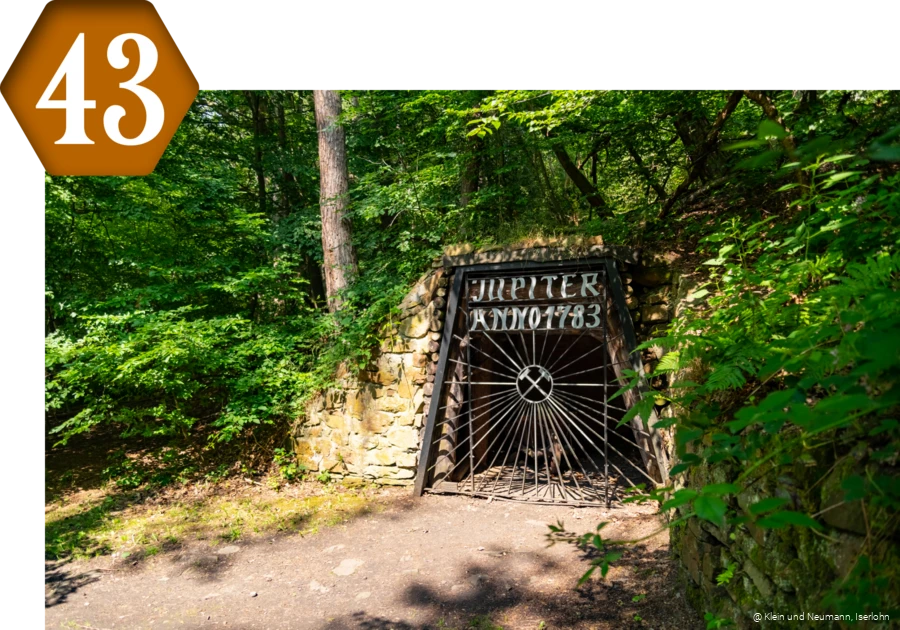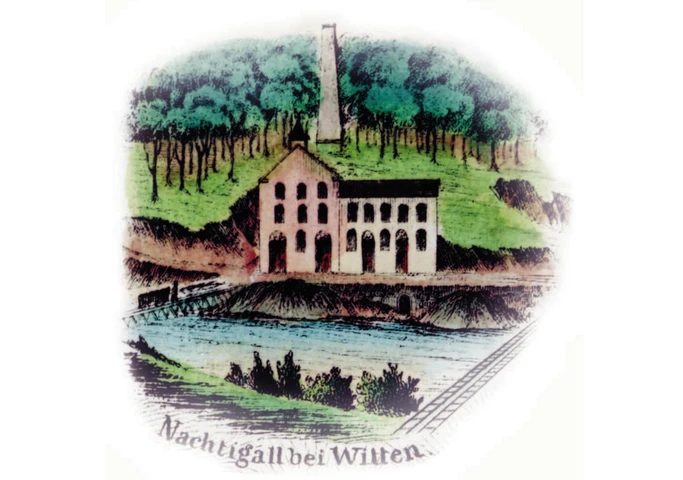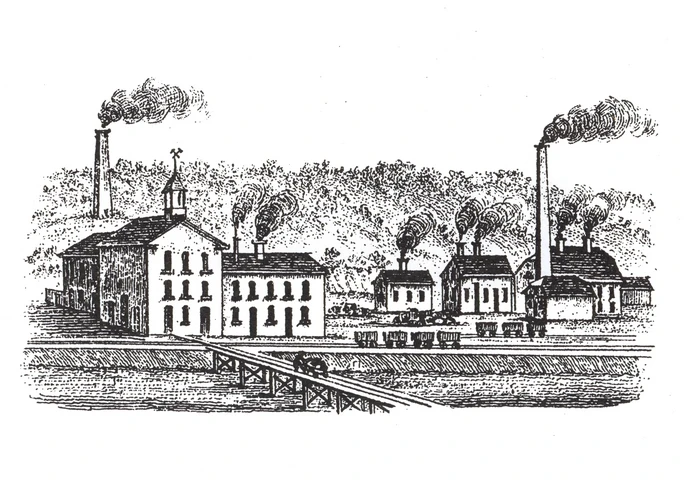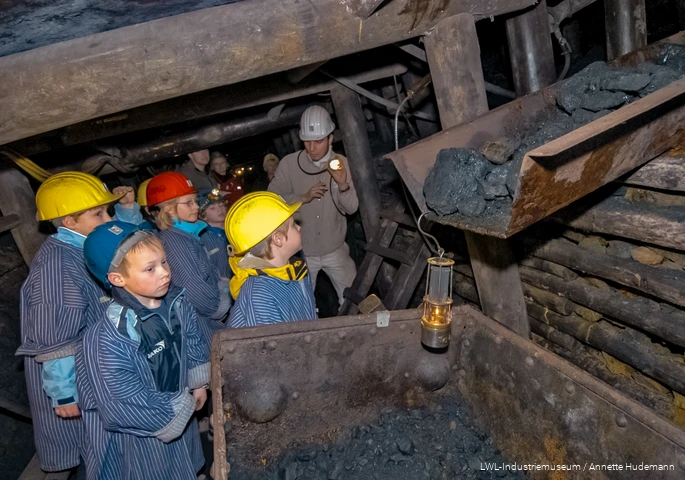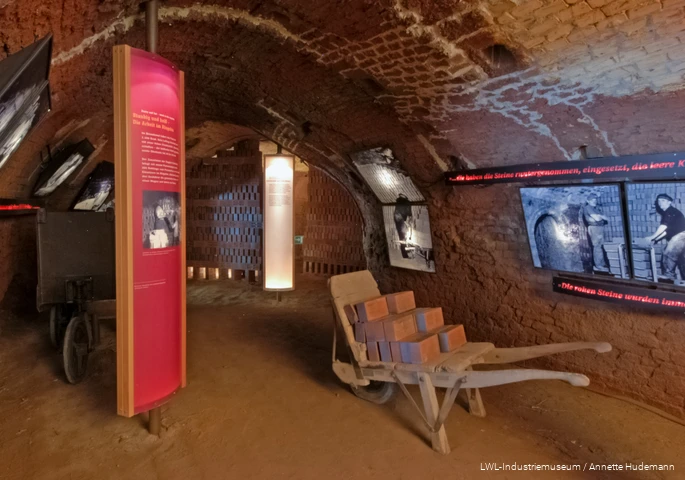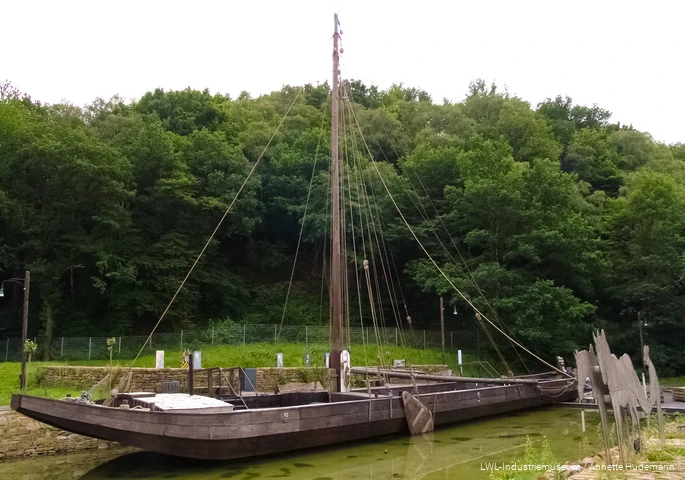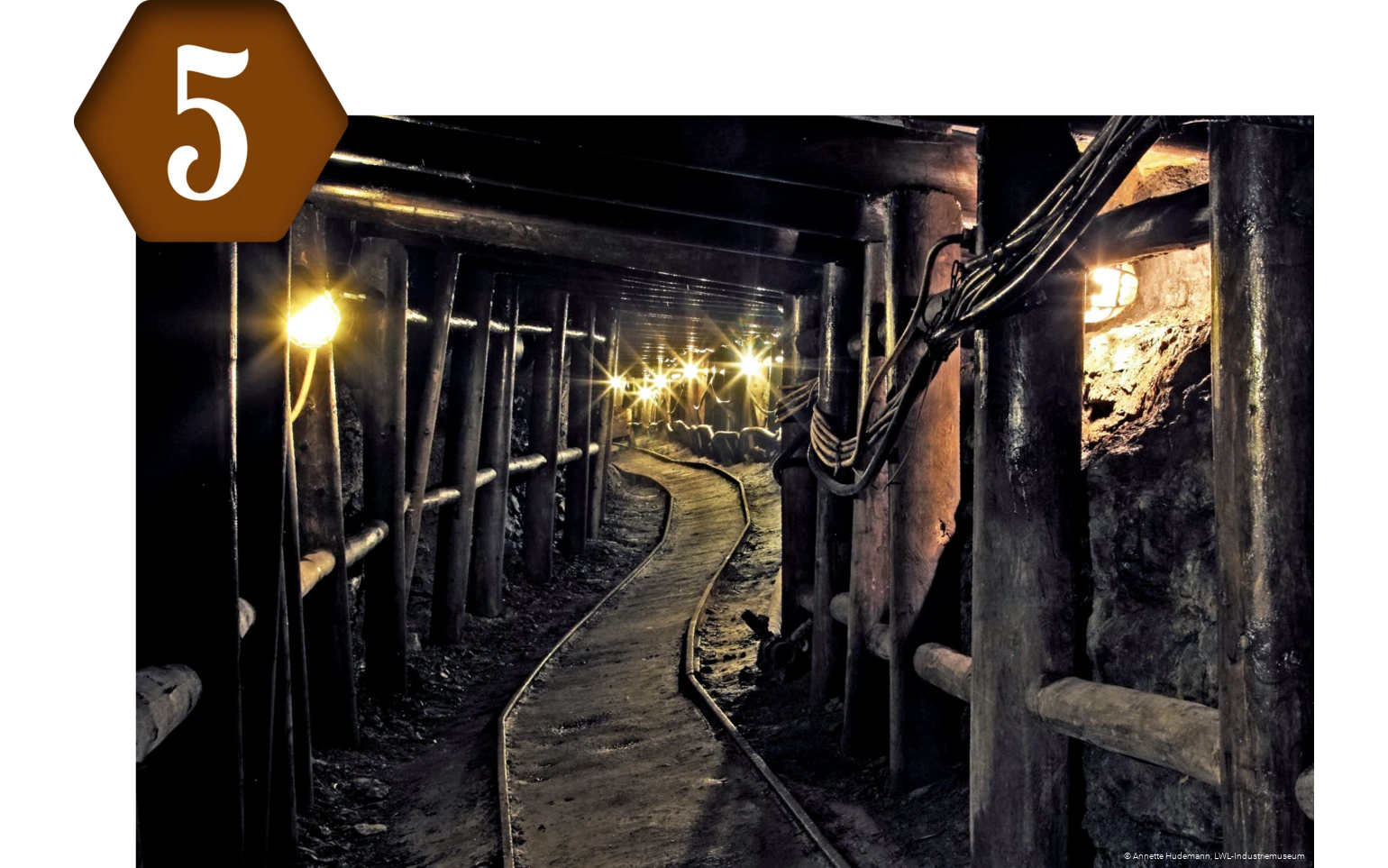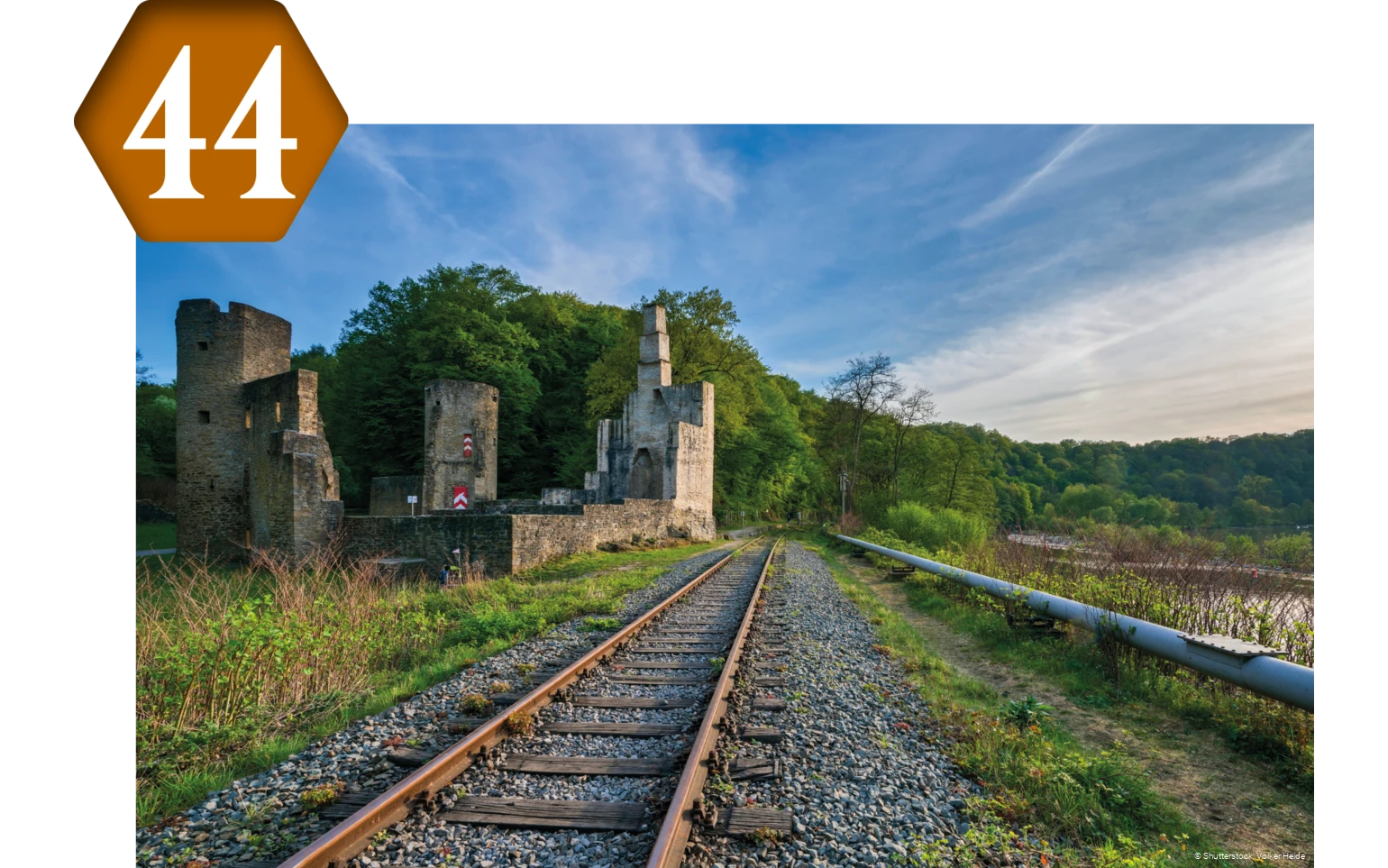The coal mine Nachtigall around 1850. Detail from a railroad map
LWL-Museum Zeche Nachtigall
Early Ruhr mining begins with farmers and day laborers: They dig horizontal tunnels into the slopes and tap hard coal for their own consumption. Later, the farmers became miners, the tunnels became shafts, and the plank roads became rails that brought the coal to the ironworks in the Sauerland region. All this is revealed in the Muttental as if under a burning glass: 300 years of mining history at your fingertips! ...
- Infotext read more
-
… Yet where to start? In the accessible Nightingale Adit with its coalbed deep in the mountain? In the engine house, featuring a 1887 steam engine last in service at Prosper Haniel Colliery in Bottrop? In the "Bucked Load Colliery" reproducing the primitive post-war coal mining industry? In the ring furnace of the later brickyard? Or on a mining trail across the idyllic Mutten Valley?
The variety of attractions reflects a long-standing mining tradition. This seemingly unspoilt landscape is in fact one of the earliest hotspots of Ruhr mining – thanks to ideal geological conditions. For the coalbeds are both very close to the surface and, with five metres of coal per 100-metre stratum, often twice as profitable as the Ruhr District average. A tour of the Nightingale Adit shows the effects on the work underground.
In 1832, with the sinking of the Neptun deep mining shaft, the situation changes dramatically. The shaft abandons the previous practice of horizontal mining and dives 450 metres into the ground. This requires powerful steam engines to drain the galleries, now arranged floor-by-floor. But what does this transition from adit to deep mining actually mean? This is told by the exhibition centred on the Hercules shaft, which succeeds Neptun in 1839 and turns the Nightingale Colliery into the first deep-mining pit south of the Ruhr.
Right from the start, the challenge is to transport the coal. For decades workers load bags of coal onto mules or push them in wheelbarrows to the growing small-scale iron and textile industries on the Wupper and Ennepe rivers. A further route leads to the coal barges on the Ruhr, as illustrated by an audio-visual display in the engine house. In 1829 the Muttenthalbahn, one of the first horse-drawn railways in Europe, starts operating, and with the opening of the Ruhrtalbahn in the 1870s, Muttental coal travels as far as the Sauerland region. In 1892, the large Nightingale pit shuts down and gives way to a brickworks, its ring furnace now being part of the museum site.
Steel Time Travel Destinations Nearby
The "Steel Time Travelers" Luise & Alfred: LWL-Museum Zeche Nachtigall
Lu:
Is that such a flöööz, there in front in the rock face? But that really glitters beautifully! ...
- Full dialog text
-
Lu: Is that such a flöööz, there in front in the rock face? But that really glitters beautifully!
Al: I'm telling you - black gold - hard coal! Here you can just grab it in the open pit mine.
Lu: Nightingale, I hear you sing. Surely the busy farmers didn't watch that for long ...
Al: That's right! They quickly realized that digging here was worthwhile. By the way, these entrances to the underworld are called mouth holes. And soon, Witten will also be going down a vertical shaft.
Lu: Look - the poor horses! Do the animals really have to work underground? What miserable torture!
Al: Typical! Madam thinks first of the beloved nags instead of the hungry mouths that the miner has to feed. After all, the miners are working with the most modern technology: boiler house and steam engines make the back-breaking work much easier! There is even a mine train here.
Lu: Well then - good luck!
Visitor information
Address:
Nachtigallstraße 35
58452 Witten
Phone: 02302/936640
zeche-nachtigall@lwl.org
www.zeche-nachtigall.de
Opening hours:
Tue - Sun and Holidays: 10 a.m. - 6 p.m.
Mon closed (except Holidays)
![]()
![]()
![]()
![]()

